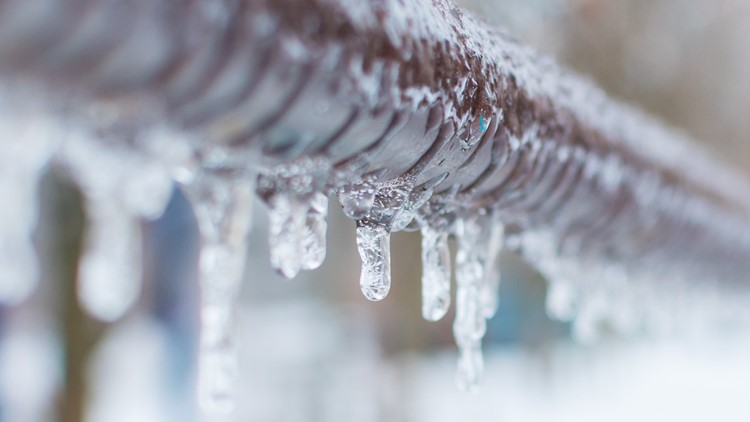Avoiding Frozen Pipes in Cold Weather: Expert Strategies
Avoiding Frozen Pipes in Cold Weather: Expert Strategies
Blog Article
The article down below in relation to How to Prevent Your Pipes From Freezing is particularly enjoyable. Don't skip it.

Winter can ruin your pipes, specifically by freezing pipelines. Below's just how to stop it from taking place and what to do if it does.
Intro
As temperature levels decrease, the danger of icy pipelines increases, potentially leading to pricey repair services and water damage. Understanding just how to avoid frozen pipes is crucial for house owners in chilly climates.
Prevention Tips
Shielding at risk pipes
Cover pipelines in insulation sleeves or make use of warm tape to shield them from freezing temperature levels. Concentrate on pipelines in unheated or exterior areas of the home.
Home heating methods
Maintain interior rooms properly warmed, specifically areas with plumbing. Open up closet doors to allow warm air to distribute around pipelines under sinks.
Just how to identify frozen pipes
Seek lowered water circulation from faucets, unusual odors or sounds from pipelines, and noticeable frost on exposed pipelines.
Long-Term Solutions
Structural modifications
Think about rerouting pipes away from exterior wall surfaces or unheated locations. Include additional insulation to attics, basements, and crawl spaces.
Updating insulation
Invest in top quality insulation for pipelines, attic rooms, and walls. Proper insulation aids preserve consistent temperature levels and lowers the danger of frozen pipes.
Shielding Outside Plumbing
Yard hose pipes and exterior faucets
Detach and drain garden hose pipes before winter. Mount frost-proof spigots or cover exterior faucets with protected caps.
Understanding Icy Pipelines
What causes pipelines to ice up?
Pipes freeze when subjected to temperature levels below 32 ° F (0 ° C) for prolonged durations. As water inside the pipelines freezes, it expands, putting pressure on the pipeline walls and potentially triggering them to rupture.
Threats and problems
Icy pipelines can lead to supply of water interruptions, residential or commercial property damage, and pricey fixings. Ruptured pipelines can flood homes and cause comprehensive structural damage.
Indicators of Frozen Piping
Recognizing frozen pipes early can stop them from breaking.
What to Do If Your Pipes Freeze
Immediate actions to take
If you believe icy pipes, maintain faucets open to soothe stress as the ice thaws. Use a hairdryer or towels taken in hot water to thaw pipelines slowly.
Verdict
Stopping frozen pipes calls for aggressive steps and fast reactions. By recognizing the causes, indications, and safety nets, house owners can shield their plumbing during winter.
5 Ways to Prevent Frozen Pipes
Drain Outdoor Faucets and Disconnect Hoses
First, close the shut-off valve that controls the flow of water in the pipe to your outdoor faucet. Then, head outside to disconnect and drain your hose and open the outdoor faucet to allow the water to completely drain out of the line. Turn off the faucet when done. Finally, head back to the shut-off valve and drain the remaining water inside the pipe into a bucket or container. Additionally, if you have a home irrigation system, you should consider hiring an expert to clear the system of water each year.
Insulate Pipes
One of the best and most cost-effective methods for preventing frozen water pipes is to wrap your pipes with insulation. This is especially important for areas in your home that aren’t exposed to heat, such as an attic. We suggest using foam sleeves, which can typically be found at your local hardware store.
Keep Heat Running at 65
Your pipes are located inside your walls, and the temperature there is much colder than the rest of the house. To prevent your pipes from freezing, The Insurance Information Institute suggests that you keep your home heated to at least 65 degrees, even when traveling. You may want to invest in smart devices that can keep an eye on the temperature in your home while you’re away.
Leave Water Dripping
Moving water — even a small trickle — can prevent ice from forming inside your pipes. When freezing temps are imminent, start a drip of water from all faucets that serve exposed pipes. Leaving a few faucets running will also help relieve pressure inside the pipes and help prevent a rupture if the water inside freezes.
Open Cupboard Doors
Warm your kitchen and bathroom pipes by opening cupboards and vanities. You should also leave your interior doors ajar to help warm air circulate evenly throughout your home.

As an avid reader about Winter Plumbing Precautions: Preventing Frozen Pipes, I imagined sharing that piece of content was worth the trouble. So long as you liked our blog entry please be sure to share it. Thanks a bunch for your time. Revisit us soon.
Source Report this page